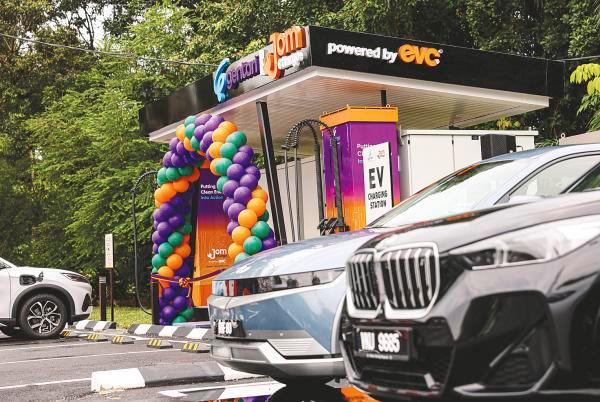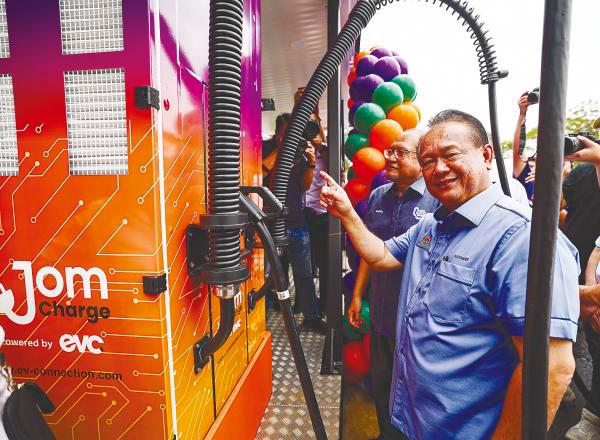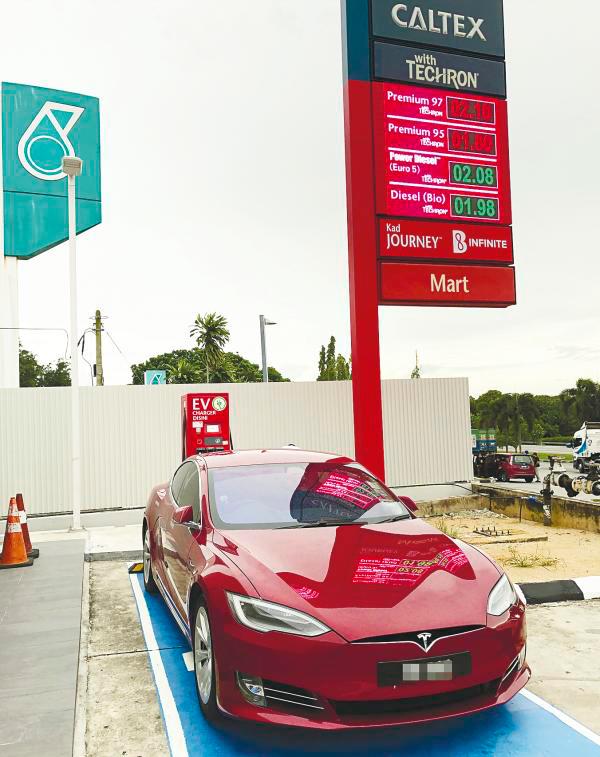PENANG: As an avid car and clean energy enthusiast, Datuk Shahrol Azral Ibrahim Halmi wasted no time in adding a Tesla electric vehicle (EV) to his collection of motor vehicles in 2017. Now he mainly relies on his EV for daily transport, citing its convenience, economic advantages and low-maintenance requirements.
Shahrol is the president of the Malaysian Electric Vehicles Owners Club (MyEVOC), a community of aficionados who regularly share up-to-date information and insights on EV.
According to him, EV batteries are no more likely to combust than internal combustion engine (ICE) vehicles. “In fact, EV batteries are 16 to 19 times less likely to combust compared with fossil fuel-powered cars,” he said.
With affordable electric cars priced below RM120,000 and the government’s push for EV usage evident in Budget 2024, EV have piqued the interest of many car owners. Adding to the excitement is a recent statement by Prime Minister Datuk Seri Anwar Ibrahim reaffirming the government’s commitment to roll out a nationwide network of 10,000 EV charging stations by 2025.
Currently, there are only 1,246 EV charging stations, pointing to the need for upgrading the country’s electric mobility infrastructure to align with our future trajectory and requirements.
Local Government Development Minister Nga Kor Ming has also developed planning guidelines for electric vehicle charging bays (EVCB) and all operators have been given two years to register with their local councils.
Malaysia is boldly venturing into futuristic high-tech innovation to establish itself as an automotive hub in the Asean region, engaging in competition with countries such as Thailand, Indonesia and Vietnam.
With a multitude of strategic frameworks firmly established, including the National Industrial Master Plan 2030, Malaysia stands resolute in propelling the EV industry and the renewable energy sector to unprecedented heights., laying the foundation for an impactful and game-changing transformation.
Amid the growing demand for EV, battery electric vehicles and fuel cell electric vehicles, there is a corresponding surge in the requirement for batteries and fuel cells that serve as their power sources.
“In simple terms, the difference between batteries for electric vehicles and fuel cells lies in how they generate and store electricity,” Shahrol said.
“Both technologies are used in EV, and the choice between them depends on factors such as efficiency, range and the availability for recharging or refuelling.
“To address the problem of safety of EV batteries, the authorities should maintain strict safety standards and closely monitor the sales of EV scooters and bicycles on platforms such as Shopee and Lazada.”

The safety aspects of e-scooters and e-bicycles were also recently raised by the Consumer Association of Penang.
Its president Mohideen Abdul Kader urged the government to pay close attention to the design and safety features of these micro-mobility vehicles to prevent “thermal runaway”, a term used to describe lithium-ion batteries catching fire due to overheating or short-circuit.
Alvin Wong, a charging station installation consultant, explained that DC charging stations are much faster and more efficient.
“The DC charging stations supply direct current (DC) directly to the EV’s battery and are suitable for fast charge when necessary. AC charging stations, on the other hand, are more cost-effective and are suitable for daily charging. The conversion from AC to DC happens inside the car, making it slower to charge,” he said.
When an EV uses an EVB, which stores electrical energy in a chemical form, the vehicle’s electric motor draws energy from the stored energy in the battery. When that energy runs out, it needs to be recharged. In contrast, fuel cells do not store electricity and generate energy through an electrochemical reaction between a fuel source and an oxidiser.
Hydrogen fuel cells, for instance, provide hydrogen gas to the anode, which reacts with oxygen at the cathode to generate electricity through controlled combustion in a fuel cell stack.
With hydrogen fuel cells, we get water as the by-product, which is a highly advantageous outcome considering its environmental friendliness. Nonetheless, the cost of setting up the hydrogen fuel stations is exorbitant.
“There is a hydrogen fuel station in Sarawak where the state government has a fleet of hydrogen cars. However, I do not know if it is cost-effective to fully transition to hydrogen fuel,” Shahrol said.
“With the escalating prices of fossil fuel, the gas companies need to find a way to maximise their existing assets and hydrogen seems like a promising choice.”
Although hydrogen fuel technology is advancing, there are still sceptics. “For me, I still prefer to use EV batteries. As hydrogen is odourless and colourless, it becomes challenging to detect leaks,” said Zhang Wei, who owns a car workshop in Penang. “I need to be absolutely certain that the technology is safe before I even consider purchasing a hydrogen car.”
While the EV community might be divided about which type of EV best suits them due to the different types of technology available, they all agree that EVs are more sustainable than conventional cars.
YL Lee, owner of a Tesla EV shared that he was immediately convinced when he discovered that his car saved him from potential accidents and has fewer maintenance considerations.
“Apart from the usual tyre rotations and brake inspections, I don’t have to worry about the engine oil change or gear oil change as EVs do not use traditional gearboxes and internal combustion engines,” he said.
“Whether autopilot is engaged or not, Tesla AI is constantly vigilant and will actively intervene to avoid an imminent accident. As for software updates, that can be done anytime at our convenience.”
Cameron Kang, another EV owner and member of the MyEVOC community, extolled the virtues of EVs.
“EV is highly efficient, and it doesn’t generate much heat during run time. I have been driving my EV for about six months now, and I look forward to enjoying its latest technology and features all the time. There is no going back to fossil fuel cars for me even though it is more convenient when it comes to refuelling.”
Additionally, he was able to achieve substantial savings with his EV. “My running cost is only about half of my previous ICE car,” he said, referring to his red Ora Good Cat from Great Wall Motors.
Overall, MyEVOC members are happy with their EVs and look forward to more charging stations in the future. “Even Rapid will be adding EV mini-busses to its fleet,” Shahrol said.
“According to a peer-reviewed study, EV are 23% cleaner and will get better as we move towards decarbonisation.”
In addition, the prime minister also mentioned in Budget 2024 that the government will also switch to EVs as official cars.










